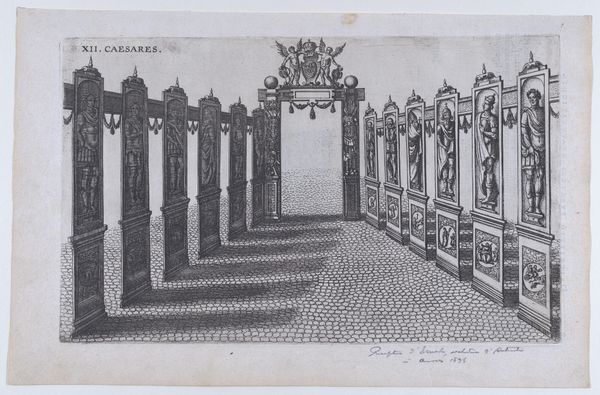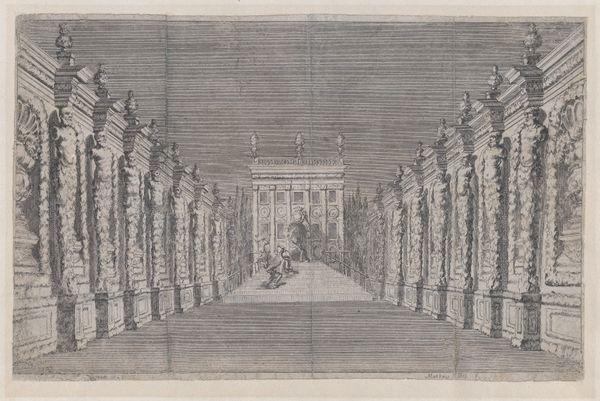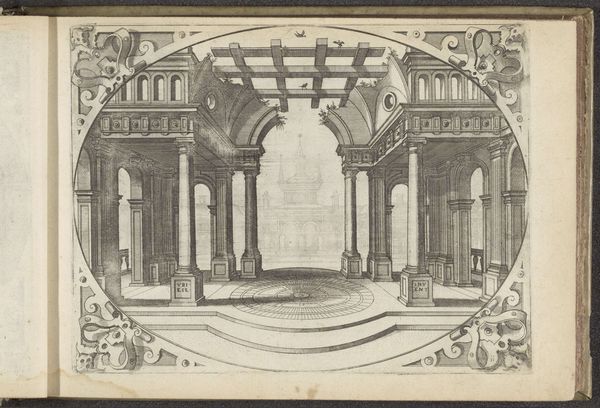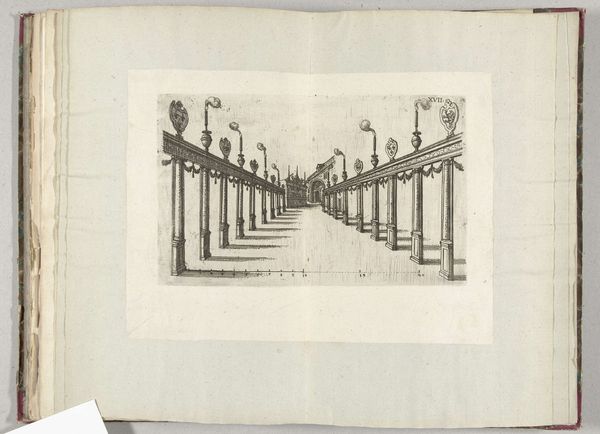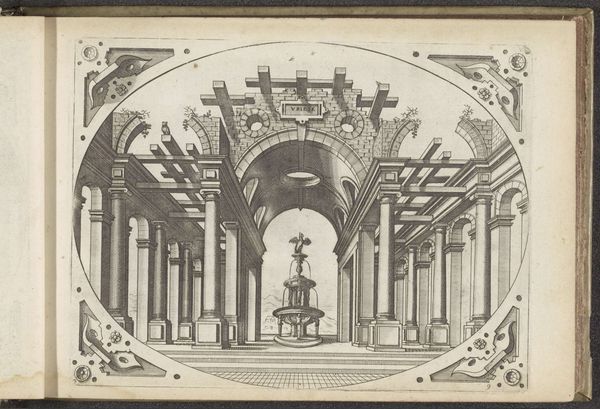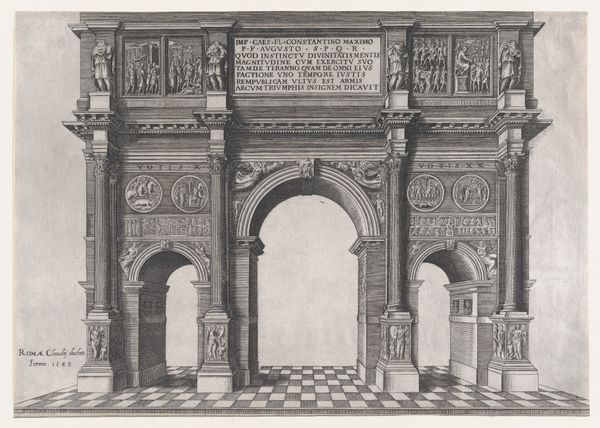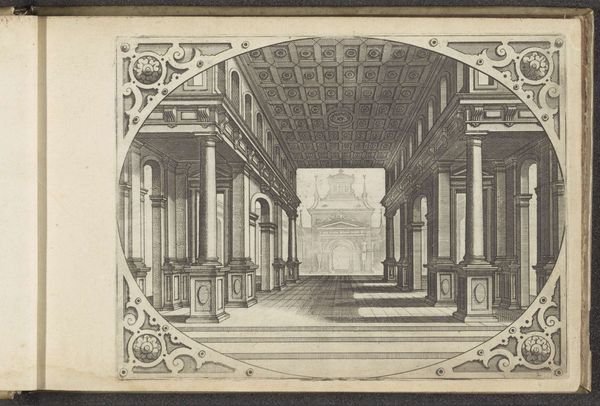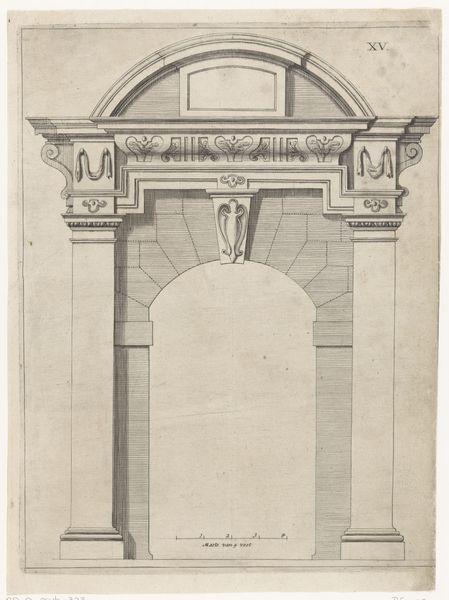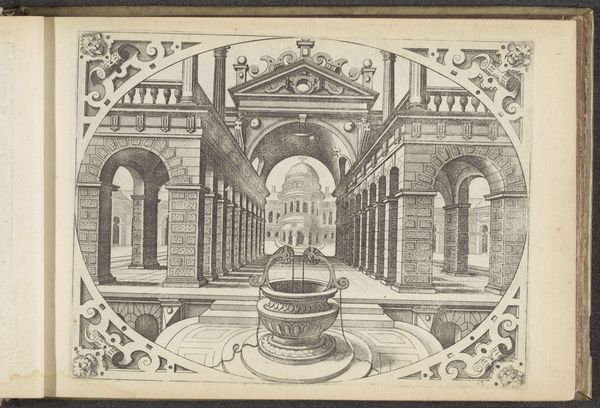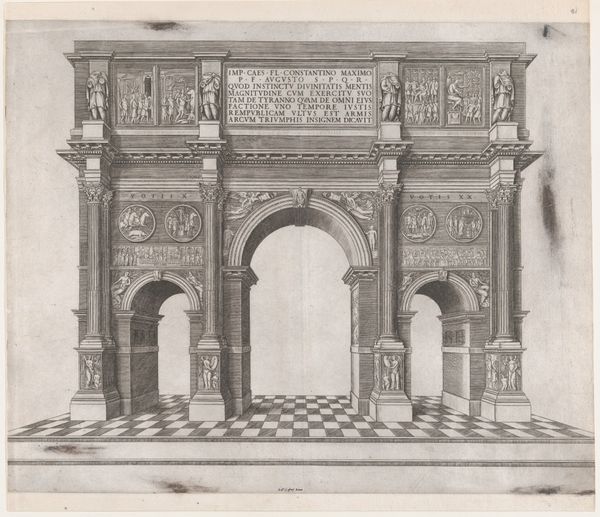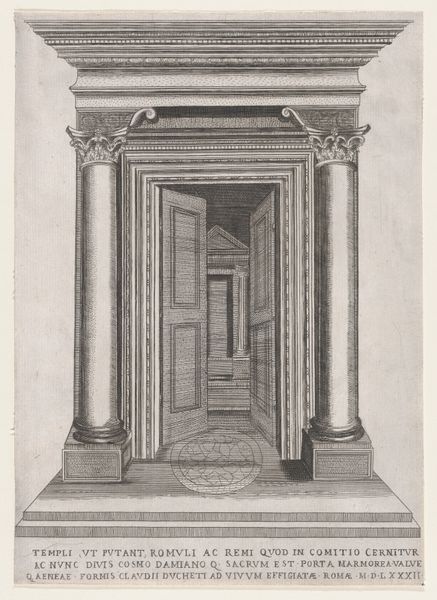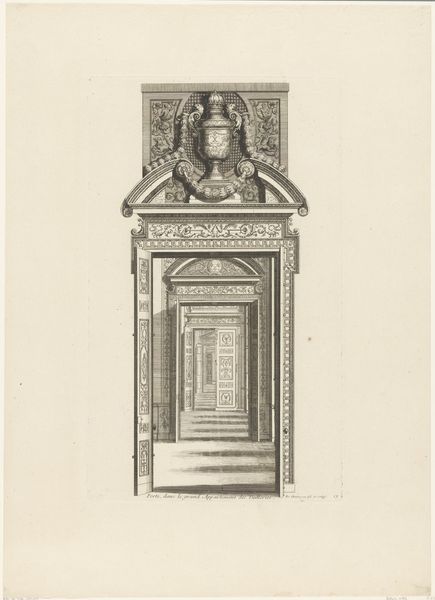
print, engraving
#
baroque
# print
#
line
#
cityscape
#
history-painting
#
engraving
Dimensions: height 200 mm, width 326 mm
Copyright: Rijks Museum: Open Domain
Pieter van der Borcht’s “Eregalerij met de twaalf keizers” was made in 1594 with engraving. It depicts an honorific gallery of Roman emperors, each rendered as statues within their respective frames. The symbol of the emperor, a figure of power and authority, carries a profound weight, echoing the ideals of governance, strength, and legacy. The twelve Caesars, immortalized here, find echoes in countless depictions of rulers throughout history. Consider the pharaohs of Egypt, the emperors of China, or even the monarchs of Europe; each seeks to emulate the grandeur and influence of these ancient figures. The emperor as a symbol has a cyclical progression, like the Ouroboros. The interesting aspect of the emperor as a concept lies in its evolution. Initially representing absolute power, it shifts through time, reflecting changing societal values. It resurfaces, evolves, and takes on new meanings in different historical contexts. In modern times, it can be found even in the cult of personality of dictators, demonstrating how symbols of authority and control continue to exert a powerful psychological influence.
Comments
No comments
Be the first to comment and join the conversation on the ultimate creative platform.
